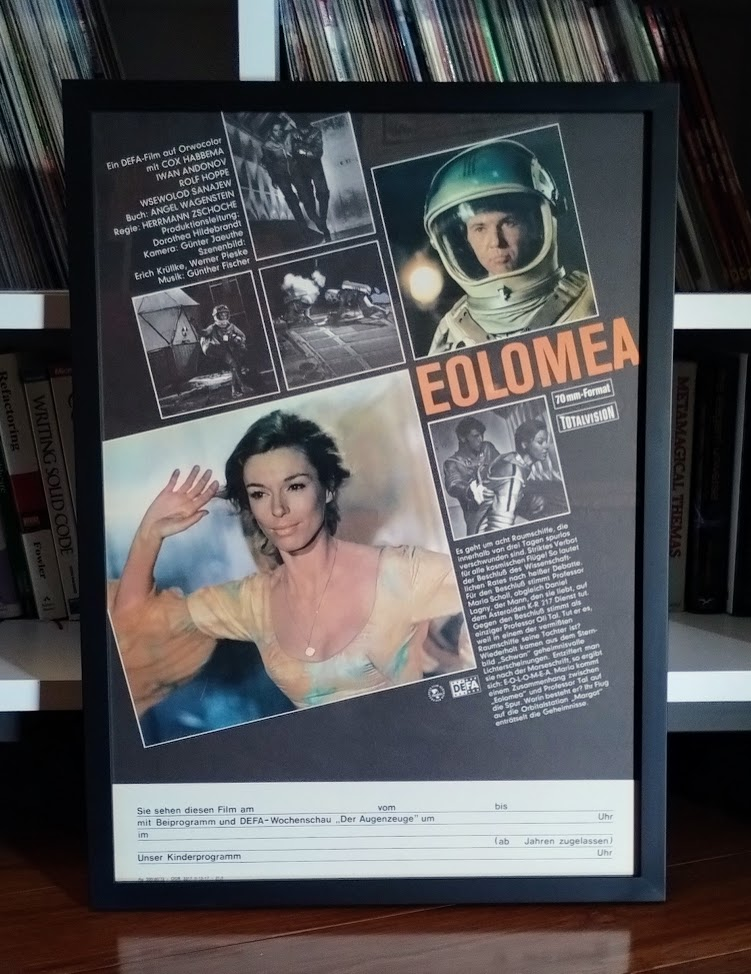I’ve been collecting movie posters for almost exactly three years and recently finished acquiring and framing a set of five distinctive East German posters. The poster mania started 1 Nov 2020 (according to my catalog notes) which was of course eight months into the pandemic when we were all finding new interests with our idle hands. It started with me describing the Italian sci-fi movie Wild, Wild Planet (I criminali della galassia, 1966) to Lisa with way more information than anyone would care to have who doesn’t love quirky, 60s, European sci-fi (“ok, so it’s directed by Antonio Margherita and is part of a loose four film cycle centered around the crew of the space station Gamma One…”). In my waxing about the movie I looked up the poster and made the fateful statement of how amazing it would be if I could find an original copy.
Well apparently it’s easy to find. And reasonably priced.
And as soon as Lisa saw the purple boots she didn’t care how boring it is that “Margheriti was otherwise known as a Giallo director and went by the name Anthony Dawson for this film to appeal to American audiences. Not to mention that he’s slyly referenced in Inglourius Basterds.” After I ordered it I was worried I was getting a reprint, but the back of the copy I received looks aged and has a stamp that looks authentic. And anyway, who wouldn’t want this on their wall:
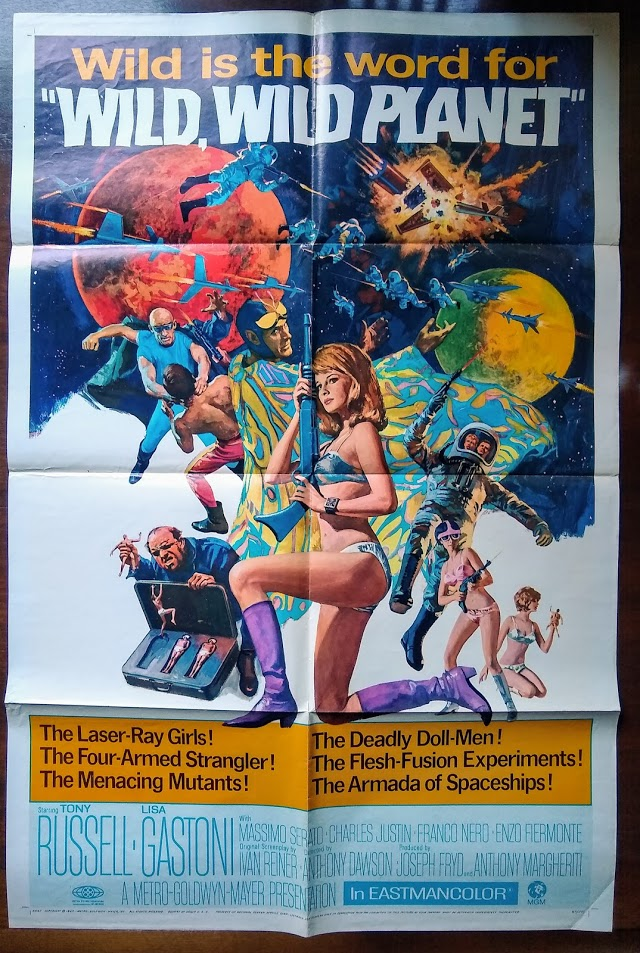
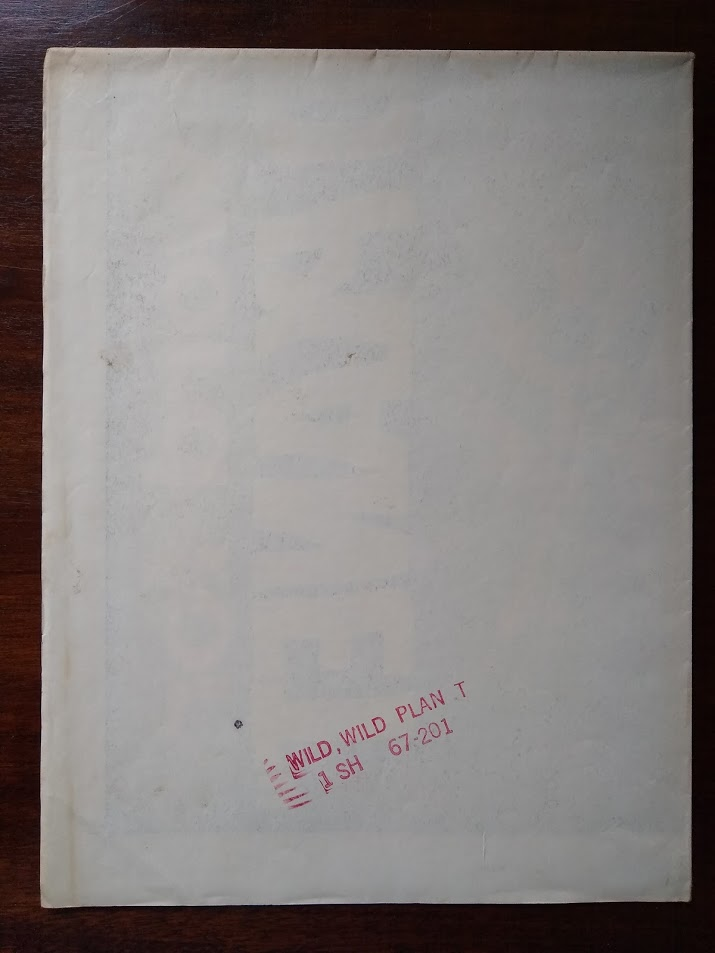
Almost exactly two years ago on 15 Dec 2022 (catalog notes) I randomly found an original East German poster for Im Staub der Sterne (In the Dust of the Stars, 1976). It is one of three sci-fi films released by East German film studio DEFA (Deutsche Film Aktiengesellschaft, German Film Company) though I’m honestly not sure how I found it. I’ll periodically search for specific films but I may have just been distractedly looking for eastern European/Iron Curtain sci-fi posters. I went through a similar phase during my many years watching and collecting sukeban films. I found two beautifully-designed posters while researching the films themselves and picked them up reasonably priced. These are the hazards of spelunking the internet.

I had purchased three DEFA sci-fi films some many years ago and they are my choice for comfort food when I need to background-watch classic sci-fi. They cover a range of styles within the genre: The Silent Star (1961) [ IMDB | Wikipedia ] is from the Stanislaw Lem novel The Astronauts. A message from Venus is discovered on an ancient recording device and an international research mission is assembled to travel there and meet with whomever sent the message. Its themes are both very Stanislaw Lem, dealing with the difficulties of understanding or even recognizing alien intelligence, and very Communist. The coming-together of international scientists is presented as the apotheosis of anti-capitalist collaboration. Eolomea [ IMDB | Wikipedia ] is a moody, socially philosophical story about the migration to a new world with the belief that it will enable a perfect society. Yeah, more propaganda but emotionally beautiful at times. In the Dust of the Stars [ IMDB | Wikipedia ] tells another story of an Earth ship travelling to an alien planet but has more humor and mystery. Someone/thing on the planet sent out an SOS but when astronauts arrive they find an advanced-yet-decadent society with the leaders denying that any message was sent. Mystery and deceit ensue. Each film is representative of its era. From 1960, a serious story about the new frontier; from 1972, a post-hippie philosophical theme; from 1976, a space adventure.
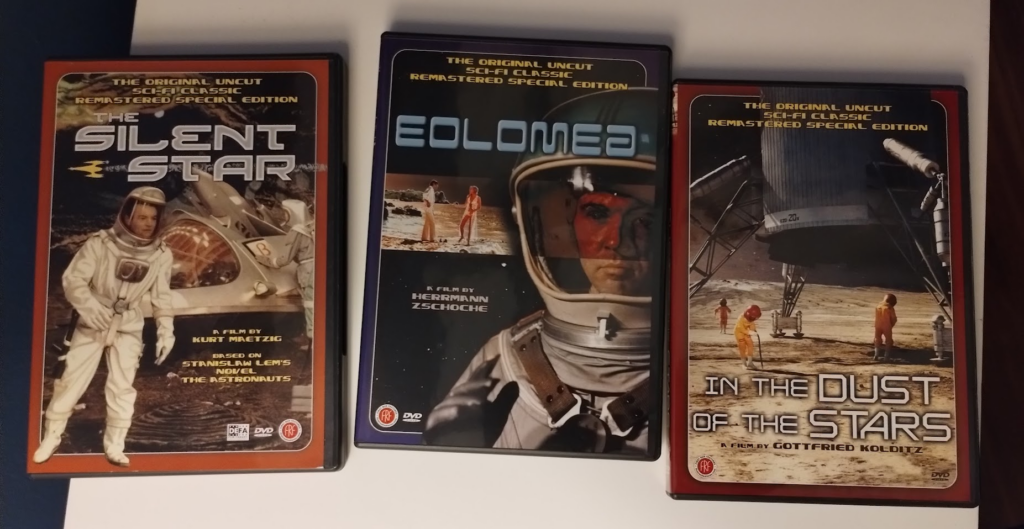
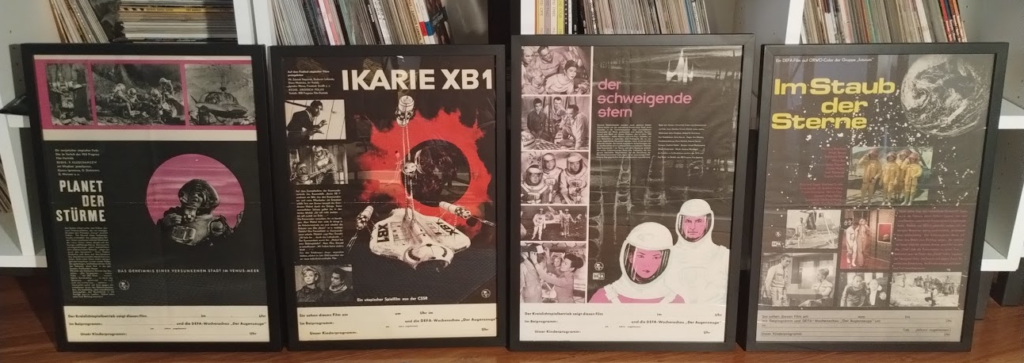
Over a period of about a year I was able to hunt down posters for two of those DEFA films, Der schweigende Stern and Im Staub der Sterne, and two other relatively well-know Eastern European films from the same era:
- Planet der Stuerme (Планета Бурь, Soviet Union, 1962) [ IMDB | Wikipedia ] – In this film, three ships are on an exploratory voyage to Venus and will be the first to land on the planet. One is destroyed along the way. After the other two arrive a team takes a shuttle to the surface and are attacked by plants and dinosaur-like animals. During a dramatic escape from the planet as an earthquake nearly destroys their ship, one of the cosmonauts discovers that a rock sample he took had encased in it the sculpture of a woman’s face providing the revelation of the first known alien intelligence.
In May of last year I had the amazing luck of finding a rare and absolutely beautiful Soviet poster for Планета Бурь:
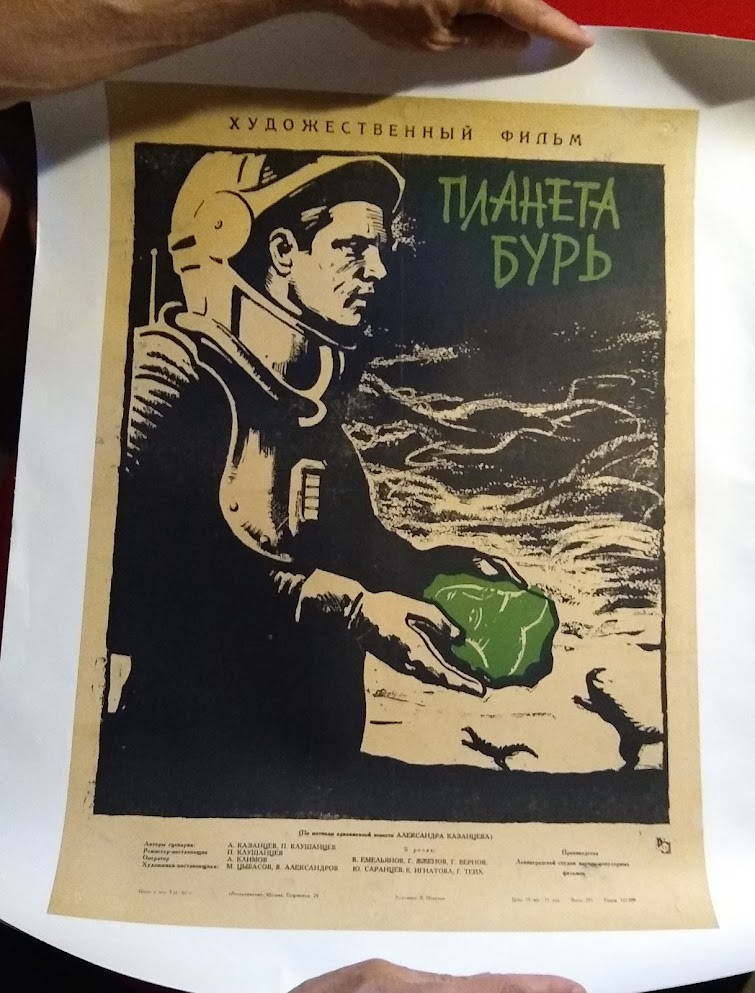
- Ikarie XB 1 (Czech Republic, 1963) [ IMDB | Wikipedia ] – This is a beautiful film that certainly feels like a spiritual ancestor of 2001: A Space Odyssey (1968). Similar to the other films, this involves a crew on a long-distance voyage, this time to investigate a planet orbiting Alpha Centauri. Also based loosely on a Stanislaw Lem novel The Magellanic Cloud.
The final addition to the set I had searched for for quite a while. I had originally found it on this Russian site but subsequently could find no other references. Finally a couple of months ago I emailed a plea to several of the sellers I’d previously bought from. One said they’d never seen it and that it’s probably very rare and others simply didn’t reply but I finally received a response from Blue Robin Collectibles in the UK. The amount of time it took me to find makes it feel more valuable, but then it also does for the seller since requesting it kindof plays your hand as a Very Interested Buyer.
I haven’t been able to find an explanation for the form at the bottom of each poster though its function is obvious. The version on each poster has similar fields for such information as “Unser Kinderprogram” (Our Childrens Program) and “die DEFA-Wochenshau Der Augenzeuge” (the DEFA weekly review: The Eyewitness).
Now, off to my next obsessive collecting hobby.
